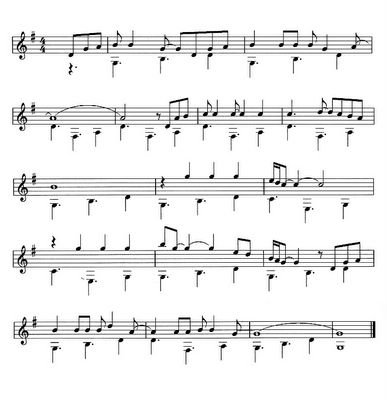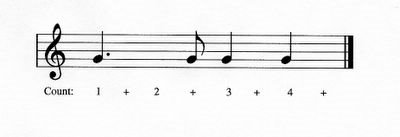Latin Influences in Jazz and Popular Music
Historical and Cultural Overview
Like American music, the classical and popular music of the Caribbean Islands and the South American countries bordering the Caribbean is the marriage of African and European musical elements but, as you might imagine, the accent is considerably different. For one, the European influences are different, with Spanish and Portuguese influences being at the fore rather than English and German ones. The African elements remain pretty much the same, the different African regional musical dialects blended into a roughly singlular code of practices.
The process of melding the disparate African musical traditions was accomplished in the same was as it was for slaves brought to North America. Each African underwent a period of “seasoning” on one of the Caribbean islands before transport to the plantations of North or South America. “Seasoning” entailed breaking the individual’s will and teaching him enough of the master’s language so that he could follow orders. The strongest African traditions were found on the islands themselves, and the next strongest were located in the geographical regions ringing the Caribbean. All Latin rhythms, regardless of origin, found their way into American music in dance music. The Argentine tango and Cuban rumba rhythms arrived first; the Brazilian samba came in the late 1950s.
Afro-Cuban Influences
Afro-Cuban influence found its way initially into the United States in the 1930s in the clave rhythm. The rhythm is named after the sticks upon which the pattern is played. It is also sometimes called the Habanera rhythm after the prinicipal city in Cuba, Havana. It evolved quickly into the dance, the "rumba" (also "rhumba"), by means of commercial radio broadcasts that made it known in all corners of the island.

Clave or Habanera Rhythm of the Rumba
From its earliest importation, the rhythm found life in the music produced by Cubans living in the United States, but also supplied a viable alternative rhythmic structure in big band jazz swing music. From the 1930s to the 1950s it was popularized by musicians such as Xavier Cugat and by Desi Arnaz, of "I Love Lucy" television fame.
The clave rhythm also appeared in mainstream popular music in the 1950s. It may be heard in the bass of Elvis Presley's "Hound Dog," a song which does not display obvious Latin influence, and "It's Now or Never," which does.
The rhythm may also be found in other songs by Elvis. Other musicians used it as a superstructure for their songs, and it was not an uncommon feature of some of the hit tunes of the day. An example, "Under the Boardwalk," follows.

First section of "Under the Boardwalk" sung by Ben E. King and the Drifters
Two other Latin styles, Mambo and Salsa, have their roots in rumba. The rhythm of both are identical to the rumba but for the last beat of the pattern, which is counted but no percussive strike occurs on it. Mambo emerged in the 1950s as a music to serve the needs of the Latin community of Spanish Harlem. It had all but disappeared when a "back to roots" movement resurrected it in the 1970s. The differences between Mambo and Salsa are slight. Both rely upon the Mambo rhythm and feature the horn section absorbed from the big bands of the 1930s and 1940s.
Argentina's Contibution to Rhythm: Tango
Tango is the clave rhythm after it had migrated south in the nineteenth century and underwent the adaptations to suit the Argentine temperament and dance needs. Like the rumba, the tango rhythm is steady and unchanging from one piece of music to the next. It is described as follows:

Tango Rhythm
Tango has been popular in American music since its initial appearance. The most important composer of tangos is Astor Piazzolla. Piazzolla was born in Argentina but raised in New York City. Upon hearing a concert of tango music when he was a teenager, he devoted his life to it. After study in France with Nadia Boulanger, he returned to Argentina. His musical style elevates the tango since it combines the best elements of tango with the harmonic influences of modern classical music. An instrument that is central to tango is the bandoneon, an accordian brought from Germany by immigrants to Argentina. In "Oblivion" on the companion CD, Piazzolla is featured on the bandoneon. Note that the tango rhythm is stated in the bass.
Tango is found in popular and jazz music, as well as in film scores, especially movies from the 1960s. Tango is the rhythmic backbone of such more recent pop tunes as the Eagles “New Kid in Town” and “Tequilla Sunrise.”
Brazil and Its Culture
The culture of Brazil stands apart from the other South American regions, of course, because it was settled by the Portuguese. The population embraces peoples of European background, predominantly Portuguese but also including Italians and members of other national groups. Peoples of Oriental background as well as those of Jewish background are also members of Brazilian society. There is also a very large component consisting of indigenous Indians within the society.
The culture stands apart in two ways: human rights and musical expression. Tensions within the society are based less upon race and more upon qualification, with economic class and education playing a significant role. If there is discrimination, it is not the result of skin color but of one’s ability and preparation to succeed within the society. Hence the poor are treated rather shabbily, regardless of ethnic origin. At the same time, the individual with most apparent African background, if he is successful in ascending to any position of respect or economic security, will not be shunned as the result of visible racial features.
Brazilian Music
The musical influences found in Brazil, then, include the European traditions brought by the Portuguese settlers, the African elements brought by the slave trade, and the influences already in place among the indigenous Indian population. The rain forest still guarantees that the further from civilization one goes, the stronger the indigenous influences. As a consequence of the three influences, Brazilian music differs significantly from music found elsewhere in South America.
Portuguese musical influences come to the fore most prominently in the use of sequence within the melodies. Unlike North American popular music, melodies retain their European rhythmic characters by adhering strongly to the accented beats, and so most frequently start and end on the first and third beats of the measure. The African influence, especially of the drum ensemble, is found at the surface in the heavy use of percussion.
On a deeper level, the influence of the polyrhythmic drum ensemble is found in the accompaniment. If the North American tried to create the illusion of polyrhythm by avoiding the accented first and third beats as the starting and stopping points for the melody while strongly stating these beats in the accompaniment, the reverse may be said to be true for Brazilian popular music. Here the melody is placed on the accented beats, and even heavily sequenced, and the accompaniment is rhythmically independent. This feature is apparent in the primary form of Brazilian popular music, the Samba.
The background rhythms found in samba occupy a vast continuum. Unlike rumba or tango, there is no single "samba rhythm." Instead, a variety of figures spin out in the background, and these figures also differ from rumba and tango in that they are quite long. It is not unusual to find samba rhythms that are four measures (16 beats) in length!
The Jazz Version of Samba: Bossa Nova
Bossa nova, a type of samba which embodies a significant type of North American jazz music to this day, was largely the invention of two Brazilian composers living in the 1960s in Rio de Janeiro near a strip of beach called Ipanema. The composers are Antonio Carlos Jobim and Luiz Bonfa. Jobim is the composer of “Girl from Ipanema,” the most famous and overplayed of bossa tunes. The two composers, who were friends, combined samba rhythms with sophisticated harmonies taken from North American jazz, the attitude of "cool" West Coast Jazz," and, to some degree, from French Impressionist music filtered through the musical sensibilities of Brazilian classical composers such as Heitor Villa-Lobos. French Impressionist music also had a significant influence upon the harmonic structures of North American jazz. Joao Gilberto sings and plays Jobim's "Girl from Ipanema," still a great tune despite over exposure, on the companion CD (note the rumba rhythm in the introduction!).

Antonio Carlos Jobim

Luiz Bonfa
Summary of Latin Styles
A significant difference in execution is found between rumba, mambo, and salsa, om one hand, and tango and Bossa nova, on the other. The music of the rumba, mambo, and salsa requires a percussion section that features a variety of Afro-Caribbean percussion instruments including maracas and differently pitched drums. The background to the music always features layers of polyrhythm played on percusssion instruments.
Tango and Bossa nova do not use percussion instruments. In tango, the signature rhythm is carried in the bass. In Bossa nova, the polyrhythms are found spread among the instruments, the guitar most often playing a long and syncopated part.
As noted, the rumba, mambo, salsa, and the tango use set one-measure patterns that serve as rhythmic signatures. Bossa nova, on the other hand, embraces no single pattern, and a rhythmic idea in Bossa nova may be quite long!

<< Home